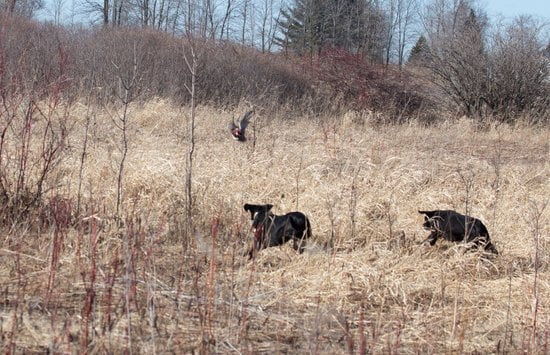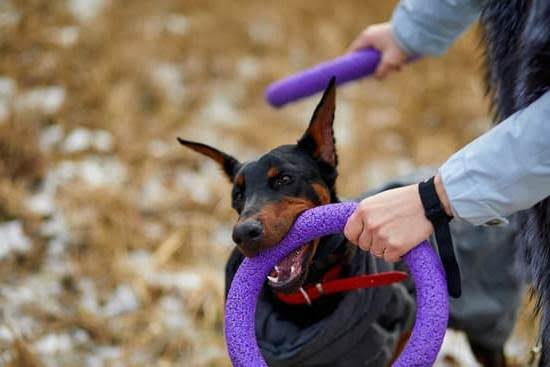Are you wondering how to paper train a housebroken dog? Paper training can be a convenient solution for pet owners who live in apartments or have limited access to outdoor space. This article will provide you with a comprehensive guide on how to successfully paper train your already housebroken dog. From understanding the importance of paper training to choosing the right supplies and implementing positive reinforcement techniques, we’ve got you covered.
When it comes to paper training, it’s important to understand that housebroken dogs may need to adapt to using pee pads indoors for various reasons. Whether it’s due to extreme weather conditions, health issues, or living arrangements, paper training can provide a practical solution for both you and your furry friend. In this section, we will delve into the significance of paper training for housebroken dogs and why it could be a beneficial option for your pet.
Throughout this article, we will explore essential topics such as choosing the right supplies for paper training, setting up the perfect paper training area, and transitioning from indoor pee pads to outdoor potty. Additionally, we’ll discuss common mistakes to avoid when paper training your dog and provide troubleshooting tips for dealing with accidents and setbacks during the process. So if you’re ready to learn how to effectively paper train your housebroken dog, let’s dive in.
Choosing the Right Supplies for Paper Training
When it comes to paper training a housebroken dog, choosing the right supplies is crucial to the success of the process. Pee pads are essential for creating a designated potty area for your dog, and there are different types to consider. Additionally, trays and other essentials can make the paper training process more effective and efficient.
Types of Pee Pads
There are various types of pee pads available in the market, including disposable pads, washable pads, and scented pads. Disposable pads are convenient and easy to use, while washable pads are more environmentally friendly and cost-effective in the long run. Scented pads can also help attract your dog to use them for potty purposes.
Paper Training Trays and Other Essentials
In addition to pee pads, paper training trays can be used to hold the pads in place and prevent leaks or spills. These trays come in different sizes to accommodate the needs of different dogs. It’s important to choose a tray that is sturdy and easy to clean. Other essentials may include cleaning solutions specifically designed for pet messes, as well as gloves and waste bags for clean-up.
Consider Your Dog’s Needs
When choosing supplies for paper training, it’s important to consider your dog’s size, age, and breed. Larger dogs may require bigger pee pads and trays, while smaller breeds may need a designated area with multiple pee pads. Understanding your dog’s needs will help you select the right supplies for successful paper training.
By choosing the right supplies for paper training your housebroken dog, you can create an effective potty area that encourages good habits while minimizing accidents in the home. With the proper setup and essentials in place, you’ll be on your way to successfully paper training your furry friend using positive reinforcement and consistent training techniques.
Setting Up the Perfect Paper Training Area
When it comes to paper training a housebroken dog, setting up the perfect area for training is essential. This section will focus on where to place the pee pads and how to create a designated potty spot for your furry friend.
Choosing the Right Location
The first step in setting up a paper training area is choosing the right location. It’s important to select an area in your home that is easily accessible to your dog, but also away from their eating and sleeping areas. A laundry room, bathroom, or even a small corner of the kitchen can work well for this purpose.
Creating a Designated Potty Spot
Once you’ve chosen the location for the paper training area, it’s time to create a designated potty spot. This can be done by placing the pee pads in a specific area within the larger space. You may want to use a special tray or holder to keep the pads in place and prevent them from sliding around. Additionally, consider using a playpen or baby gate to further define the designated potty spot for your dog.
Introducing Your Dog to the Training Area
After you have set up the paper training area, it’s important to introduce your dog to the new space. Bring them over to the designated potty spot and encourage them to sniff around and become familiar with it. Use positive reinforcement such as treats and praise when they show interest in the pee pads. With consistent encouragement and patience, your dog will learn that this is their designated potty spot.
By following these steps and utilizing positive reinforcement techniques, you can effectively set up a paper training area for your housebroken dog. With consistency and patience, your furry friend will learn how to use pee pads in no time.
Positive Reinforcement and Training Techniques
Paper training a housebroken dog requires patience, consistency, and positive reinforcement. Using treats, praise, and consistency will help encourage your dog to use the pee pads effectively. One of the most important aspects of paper training is to create a positive association between the pee pads and your dog’s natural potty instincts.
To start paper training your housebroken dog, it’s important to choose high-quality pee pads and designate a specific area in your home for potty training. Place the pee pads in this designated spot and encourage your dog to use them by providing treats and plenty of praise when they do so successfully. Consistency is key during this process – take your dog to the designated potty spot frequently, especially after eating, drinking, sleeping, or playing.
Positive reinforcement plays a crucial role in paper training. When your dog uses the pee pads properly, reward them with their favorite treats and shower them with verbal praise. This will reinforce the behavior and make them more likely to continue using the designated potty area. With time and consistent positive reinforcement, most dogs can learn how to paper train effectively.
| Aspect | Details |
|---|---|
| Supplies | Choose high-quality pee pads for effective training |
| Designated Area | Create a specific area in your home for potty training |
| Positive Reinforcement | Reward successful use of pee pads with treats and verbal praise |
Transitioning From Paper Training to Outdoor Potty
One effective method for transitioning from paper training to outdoor potty is to slowly move the pee pads closer to the door that leads outside. Start by placing the pee pads near the door, then gradually move them just outside the door, and finally to the desired outdoor potty area. This gradual transition helps your dog associate going potty with being outside while still having access to familiar pee pads.
Another important aspect of transitioning from paper training to outdoor potty is timing. Take your dog outside at regular intervals, especially after meals, playtime, and naps. This consistency helps establish a routine for outdoor potty and reinforces the behavior you want to encourage. Additionally, make sure to praise and reward your dog when they successfully go potty outside, reinforcing the positive association with this new behavior.
It is essential to remain patient and consistent during this transition period. Even if your dog has started using outdoor potty regularly, keep some pee pads available indoors as a security measure in case they have accidents. With patience, positive reinforcement, and consistency, you can effectively transition your housebroken dog from paper training to using outdoor potty as their primary bathroom spot.
| Transitioning Strategies | Benefits |
|---|---|
| Gradually moving pee pads closer to the door | Helps dogs associate going potty with being outside |
| Taking dogs outside at regular intervals | Establishes a routine for outdoor potty and reinforces desired behavior |
| Patience and consistency | Aids in effectively transitioning dogs from paper training to outdoor potty |
Common Mistakes to Avoid
When paper training a housebroken dog, it’s important to be aware of common mistakes that can hinder the training process. Whether you’re a first-time dog owner or have experience with training, avoiding these pitfalls is key to successful paper training. Here are some common mistakes to watch out for:
- Skipping the Consistency: One of the most crucial aspects of paper training is consistency. This means maintaining a regular schedule for potty breaks and consistently placing the pee pads in the designated area. Skipping potty breaks or moving the pee pads around can confuse your dog and make it harder for them to understand where they should go.
- Using Punishment: Punishing your dog for accidents or not using the pee pads can create fear and anxiety, which can lead to even more accidents. Instead of punishment, focus on positive reinforcement by using treats, praise, and encouragement when your dog successfully uses the pee pads.
- Not Cleaning Accidents Properly: Accidents will happen during the paper training process, but it’s essential to clean them up properly. Using an enzymatic cleaner will help remove any lingering odors that could attract your dog back to that spot for future accidents.
Avoiding these common mistakes will help ensure a smoother paper training process for your housebroken dog. By staying consistent, using positive reinforcement, and properly cleaning up accidents, you’ll be on your way to successfully paper training your furry friend.
It’s important to remember that every dog is different, so patience and perseverance are key when it comes to how to paper train a housebroken dog. If you find yourself facing challenges during the training process, don’t hesitate to seek guidance from a professional trainer or behaviorist who can provide valuable advice and support.
Troubleshooting
Dealing with accidents and setbacks during the paper training process can be frustrating, but it’s important to stay patient and consistent. Here are some tips for troubleshooting these issues:
1. Identify the cause of the accident: It’s essential to figure out why your dog is having accidents on the pee pads. Is it due to a medical issue, a lack of understanding of where to go potty, or another reason? Identifying the cause will help you address the problem effectively.
2. Increase supervision: If your dog is having frequent accidents, consider increasing your supervision when they are out of their crate or designated paper training area. Keeping a close eye on them will allow you to redirect them to the pee pad if necessary and prevent accidents from happening.
3. Adjust the training routine: If you notice that your dog consistently has accidents at certain times of the day, consider adjusting their feeding and potty schedule. For example, take them to the pee pad after meals, naps, and playtime. Consistency in their routine will help reinforce positive potty habits.
4. Clean up accidents properly: Accidents will happen during the paper training process, so it’s crucial to clean up any messes promptly and thoroughly. Use an enzymatic cleaner to eliminate any lingering odors that may attract your dog back to that spot for future accidents.
5. Stay positive and patient: Paper training a housebroken dog takes time and commitment. It’s essential to maintain a positive attitude and avoid punishment for accidents. Instead, use positive reinforcement techniques such as treats and praise when your dog successfully uses the pee pads.
Remember that every dog is different, so what works for one may not work for another. Be patient with your furry friend as they learn how to use pee pads effectively during the paper training process.
Maintenance and Clean-Up
In conclusion, paper training a housebroken dog can be an effective and convenient way to maintain good potty habits for your pet, especially in situations where outdoor bathroom breaks may not always be possible. By understanding the importance of paper training and following the right techniques, you can successfully teach your dog to use pee pads while minimizing accidents and keeping your home clean.
Choosing the right supplies for paper training, such as pee pads and trays, is crucial in creating the perfect potty area for your dog. Additionally, setting up the designated potty spot in the right location and using positive reinforcement techniques can further encourage your dog to use the pee pads consistently.
It’s also important to gradually transition your dog from paper training to outdoor potty, allowing them to adapt to new routines while still having access to pee pads if needed.
As with any training process, it’s crucial to avoid common mistakes and be prepared for setbacks during the paper training journey. Consistent maintenance and clean-up of the paper training area will also help ensure that your home remains odor-free. By following these tips and staying patient throughout the process, you can effectively paper train a housebroken dog and maintain a clean living environment for both you and your pet.
Frequently Asked Questions
How Do You Stop a Dog From Peeing and Pooping in the House?
The key to stopping a dog from peeing and pooping in the house is consistent training, positive reinforcement, and establishing a routine for potty breaks. Keep an eye on your dog’s behavior and try to anticipate when they need to go outside.
How Do You House Train a Paper Trained Dog?
House training a paper trained dog involves gradually transitioning them from going indoors on potty pads to going outside. Start by moving the potty pads closer to the door, then gradually moving them outside. Be patient and consistent with the training process.
How Long Does It Take to Paper Train a Dog?
The time it takes to paper train a dog can vary depending on the individual dog, their age, and their previous training. Some dogs may pick up on paper training quickly, while others may take longer to fully grasp the concept. Consistent training and positive reinforcement are key in speeding up the process.

Welcome to the blog! I am a professional dog trainer and have been working with dogs for many years. In this blog, I will be discussing various topics related to dog training, including tips, tricks, and advice. I hope you find this information helpful and informative. Thanks for reading!





